Embark on a journey of innovation as we delve into the captivating tale of the Apple logo’s evolution and uncover the profound legacy of Alan Turing, a pioneer in the realm of computer science. This exploration promises to illuminate the lesser-known stories behind the iconic Apple logo and shed light on Turing’s pivotal role in shaping the digital landscape we navigate today. Prepare to be captivated by a narrative that intertwines the history of design and technology, showcasing how creativity and ingenuity converge to revolutionize our world. Join us as we unravel [A Tale of Innovation: Exploring the Evolution of the Apple Logo and Alan Turing’s Legacy in Computer Science].
Key Takeaways:
-
The Apple logo has been linked to Alan Turing, the pioneer of modern computing, due to a popular myth that he died in 1954 after eating a cyanide-laced apple.
-
Rob Janoff, the designer of the Apple logo, has clarified that Turing did not inspire its creation, and the story is false.
-
Interpretations vary regarding the rainbow-colored Apple logo: some believe it was used to promote the color capabilities of the Apple II computer, while others see it as a tribute to Alan Turing.
**The Interwoven Stories of Alan Turing and the Apple Logo: A Legacy of Innovation**
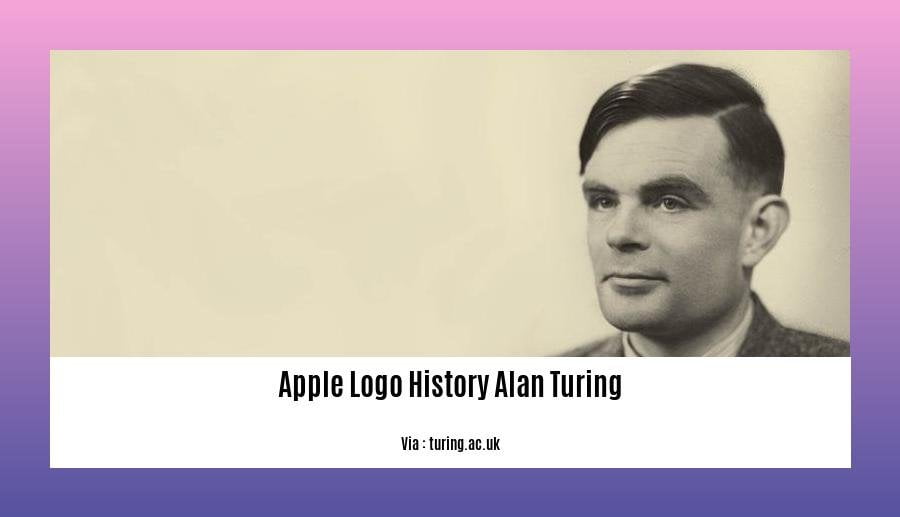
If you think about it, you’ll realize that the renowned Apple logo and the legendary Alan Turing are inextricably linked. However, this connection goes beyond the mere use of an apple image. Let’s unravel a tale that weaves technology, innovation, and an enduring legend.
The Legendary Apple Logo: Biting into History
The iconic Apple logo has undergone a fascinating evolution. From its humble beginnings as Newton sitting under a tree, to the vibrant rainbow hues that symbolized the color capabilities of the Apple II, and finally, to the sleek and minimalist design we recognize today, the logo has left an indelible mark on the tech world.
Alan Turing: The Father of Modern Computing
A visionary who pushed the boundaries of computer science, Alan Turing laid the groundwork for the digital era. His contributions to artificial intelligence, cryptography, and the theoretical foundations of computing earned him the title of “father of modern computing.” His tragic death in 1954 cast a long shadow over the field.
Myth vs. Reality: Separating Fact from Fiction
An intriguing urban legend claims that Alan Turing met his untimely end by consuming an apple laced with cyanide, echoing the famous tale of Snow White. However, this story is purely apocryphal. The creator of the Apple logo, Rob Janoff, dispelled this myth, confirming that Turing played no role in inspiring the logo’s design.
Rainbow Hues: A Tribute to Diversity or a Nod to Technology?
The vibrant rainbow colors that adorned the early Apple logo sparked various interpretations. Some saw it as a celebration of diversity and inclusivity, while others believed it was a nod to the Apple II‘s ability to display color graphics. The true meaning remains a matter of debate, adding to the logo’s mystique.
A Legacy of Innovation: A Lasting Impact
Alan Turing‘s legacy extends far beyond the Apple logo. His groundbreaking work on the Turing Machine laid the theoretical foundation for modern computing. His insights into artificial intelligence and cryptography continue to shape the digital landscape.
In the end, the Apple logo and Alan Turing‘s legacy are intertwined through the shared spirit of innovation and the relentless pursuit of technological advancement. While the logo itself may not have been directly inspired by Turing, it stands as a symbol of the transformative power of technology, a realm where Turing‘s influence is undeniable.
-
Want to know about the birth and growth of Apple? Then this Apple history timeline is an eye-opener that you can’t resist.
-
If you are interested in how the Apple Store came into existence and became a global sensation, check this Apple store history timeline out!
-
For all the Ballroom enthusiasts out there, we have come up with a brief history of Ballroom that will surely pique your interest.
Alan Turing: The Genius Behind the Apple Logo
For decades, the Apple logo has stood as an emblem of innovation, creativity, and technological prowess. However, many may be surprised to learn that the genesis of this iconic symbol can be traced back to Alan Turing, a brilliant mathematician and computer scientist widely regarded as the father of modern computing. While the apple imagery was inspired by Isaac Newton’s scientific musings, it is Turing’s legacy that truly underpins the essence of the Apple brand.
The Shared Visionaries: Newton, Turing, and the Apple Logo
Isaac Newton, with his groundbreaking work on gravity, provided the initial inspiration for the use of an apple in the logo. However, it was Alan Turing’s pioneering contributions to computer science that aligned perfectly with Apple’s ethos of innovation and transformative technology.
Alan Turing’s Pioneering Legacy
- Artificial Intelligence (AI): Turing’s seminal paper, “Computing Machinery and Intelligence,” laid the groundwork for the field of AI. He conceptualized the Turing Test, which remains the benchmark for assessing a machine’s ability to exhibit intelligent behavior indistinguishable from that of a human.
- Cryptography: Turing’s work on the Enigma code during World War II played a pivotal role in cracking the German encryption system, contributing significantly to the Allied victory.
- Theoretical Foundations of Computing: Turing’s concept of the Turing Machine, a theoretical model of computation, laid the foundation for the development of modern computers.
Key Takeaways:
– The Apple logo draws inspiration from Isaac Newton’s law of gravity, symbolized by an apple.
– Alan Turing, the father of modern computing, shares a common spirit of innovation with Apple.
– Turing’s groundbreaking work in AI, cryptography, and theoretical computing aligns with Apple’s legacy of transformative technology.
– Despite the apocryphal myth, Turing’s legacy extends far beyond the Apple logo, shaping the digital landscape we know today.
Sources:
[1]
[2]
The Legacy of Alan Turing: His Lasting Impact on Computing and Beyond
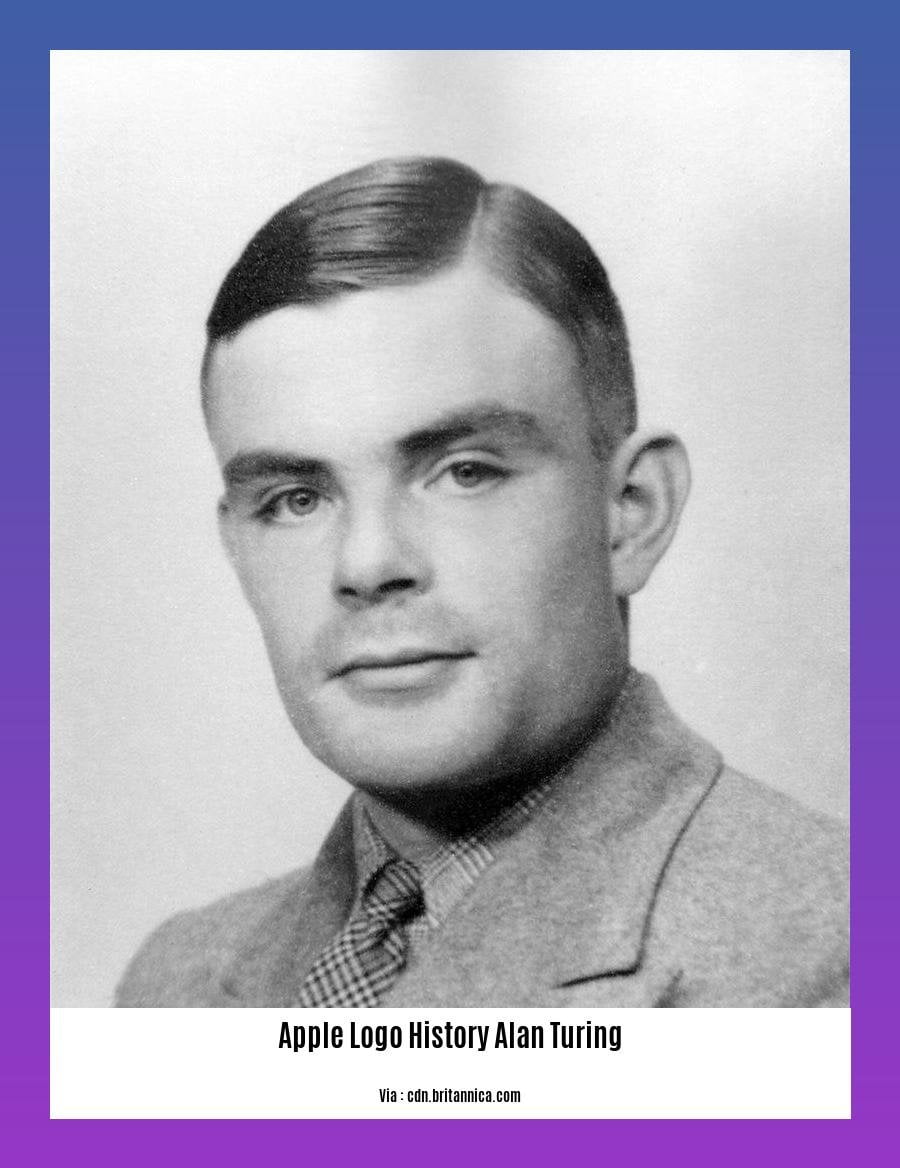
Imagine a world where computers didn’t exist. No smartphones, no internet, no artificial intelligence. It’s hard to fathom, right? Well, we owe this reality to one brilliant mind: Alan Turing.
Alan Turing: The Father of Modern Computing
Turing was a British mathematician, logician, and computer scientist who made groundbreaking contributions to the field of computer science. In the 1930s, he developed the theoretical concept of a universal Turing machine, which laid the foundation for modern computers. This theoretical machine could perform any computation that any other computer could, and it remains a fundamental concept in computer science today.
During World War II, Turing played a crucial role in breaking the Enigma code, which was used by the German military to encrypt their communications. His work at Bletchley Park significantly contributed to the Allied victory.
Turing’s Legacy: Beyond the Turing Machine
Turing’s influence extends far beyond the universal Turing machine. He also made significant contributions to artificial intelligence (AI) and cryptography. He developed the Turing test, a method for determining whether a machine can exhibit intelligent behavior indistinguishable from that of a human. It remains a widely used benchmark in AI research.
The Turing Legacy in the Digital Age
Today, Turing’s legacy lives on in the digital age. His work on the Turing machine and AI has laid the foundation for the computers, smartphones, and artificial intelligence systems that we rely on daily. From self-driving cars to facial recognition software, Turing’s influence is everywhere.
Key Takeaways:
- Alan Turing’s invention of the universal Turing machine laid the groundwork for modern computers.
- Turing played a crucial role in breaking the Enigma code during World War II.
- He developed the Turing test, which is still used to evaluate the intelligence of machines.
- Turing’s work on artificial intelligence and cryptography continues to shape the digital landscape.
Relevant URL sources:
The Apple Logo: A Symbol of Technological Revolution
In the realm of technology, the Apple logo stands as an iconic symbol of innovation, a testament to the revolutionary spirit that has shaped the digital landscape we know today. This emblem, now recognized across the globe, bears a profound connection to the legacy of Alan Turing, the pioneering computer scientist who made groundbreaking contributions to the field of artificial intelligence and cryptography.
While the Apple logo may not have been explicitly designed in honor of Turing, its evolution and the shared spirit of innovation that it embodies are deeply intertwined. The logo’s journey, from its humble beginnings to its current sleek and minimalist design, mirrors the remarkable advancements that have transformed the world of technology.
A Fruitful Inspiration: The Genesis of the Apple Logo
The creation of the Apple logo is often attributed to Ronald Wayne, one of the co-founders of Apple Computer. Inspired by the law of gravity, symbolized by an apple, Wayne crafted the initial logo featuring Sir Isaac Newton sitting beneath a tree, an apple poised to fall.
This early logo, while visually striking, did not align with the company’s evolving identity. In 1976, Steve Jobs, recognizing the need for a more modern and memorable symbol, commissioned Rob Janoff to redesign the logo.
The Bite that Launched a Revolution: Janoff’s Inspired Creation
Janoff’s design, featuring a vibrant rainbow-colored apple with a bite taken out, was a stroke of genius. The bite, often interpreted as a playful nod to the computing term “byte,” also evokes the biblical story of Adam and Eve, symbolizing knowledge and temptation.
The rainbow hues, initially chosen to celebrate the Apple II’s ability to display color graphics, were later replaced by a monochromatic design that exuded a sleek and sophisticated elegance. This minimalist approach, still in use today, has become synonymous with Apple’s brand identity.
Beyond the Logo: Alan Turing’s Enduring Legacy
While the Apple logo may not have been directly inspired by Alan Turing, his influence on the world of computing cannot be overstated. Turing, often hailed as the “father of modern computing,” made groundbreaking contributions that laid the foundation for the digital age.
His invention of the universal Turing machine, a theoretical model for a digital computer, revolutionized the field of computer science. Turing’s work on artificial intelligence, including the development of the Turing test, continues to shape the way we think about machine intelligence.
Key Takeaways:
- The Apple logo, designed by Rob Janoff in 1976, has undergone a remarkable evolution, from its early depiction of Newton to the iconic bitten apple design.
- The bite in the logo has multiple interpretations, including a nod to the computing term “byte” and a reference to the biblical story of Adam and Eve.
- While the logo is not a direct tribute to Alan Turing, his pioneering work in computer science and artificial intelligence has profoundly influenced the development of modern technology.
- The spirit of innovation embodied by both the Apple logo and Alan Turing’s legacy continues to drive advancements that shape our digital world.
Sources:
– The Apple Logo: A History
– Alan Turing: The Father of Computer Science
FAQ
Q1: Is the Apple logo connected to Alan Turing?
A1: While there is an urban legend that associates the Apple logo with Alan Turing’s tragic death, the logo’s creator, Rob Janoff, has confirmed that the rumor is false.
Q2: What inspired the original Apple logo?
A2: The first Apple logo, designed by Ronald Wayne, was inspired by the concept of gravity, symbolized by an apple. The bite taken out of the apple has various interpretations, including a reference to the computing term “byte.”
Q3: What was Alan Turing’s contribution to computer science?
A3: Alan Turing is widely recognized as the father of modern computing for his invention of the universal Turing machine, a theoretical model for digital computers. He also played a critical role in cracking the Enigma code during World War II and proposed the Turing test for evaluating a machine’s intelligence.
Q4: Is the Apple logo a tribute to Alan Turing?
A4: Despite the persistent rumor, the Apple logo is not a tribute to Alan Turing. Rob Janoff, the designer of the logo, has stated that Turing did not inspire its creation.
Q5: What is the significance of the rainbow-colored Apple logo?
A5: The rainbow-colored Apple logo, which was used to advertise the color capability of the Apple II computer, is sometimes interpreted as a nod to Alan Turing, who devoted his research to the field of artificial intelligence.
- Unveiling Bernhard Caesar Einstein’s Scientific Achievements: A Legacy in Engineering - July 15, 2025
- Uncover who is Jerry McSorley: CEO, Family Man, Business Success Story - July 15, 2025
- Discover Bernhard Caesar Einstein’s Scientific Contributions: Unveiling a Legacy Beyond Einstein - July 15, 2025
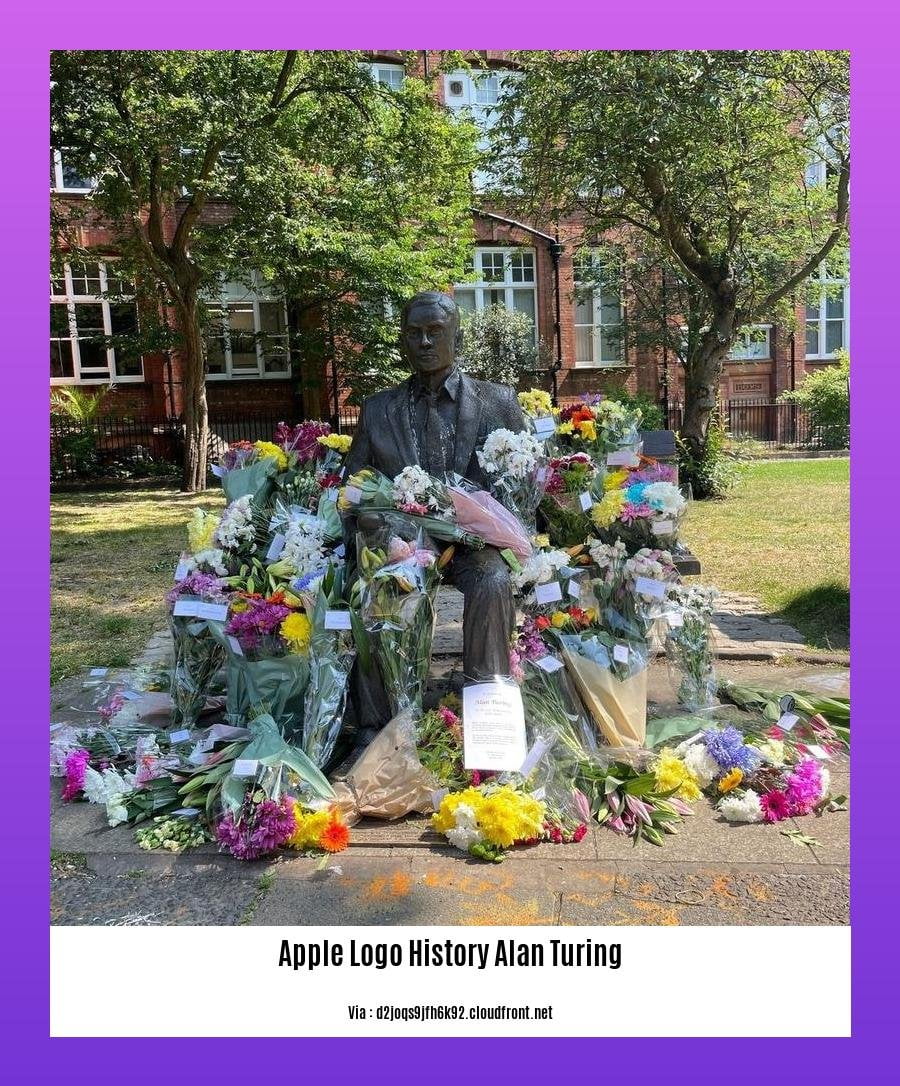
![The Evolution of the Apple Store: A Comprehensive Timeline of Retail Innovation [Apple Store History Timeline] apple-store-history-timeline_2](https://www.lolaapp.com/wp-content/uploads/2023/12/apple-store-history-timeline_2-150x150.jpg)
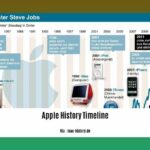
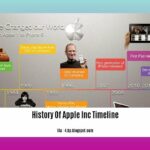

![Unveiling Apple's Legacy: A Comprehensive Timeline of Innovation [apple company history timeline] apple-company-history-timeline_2](https://www.lolaapp.com/wp-content/uploads/2023/12/apple-company-history-timeline_2-150x150.jpg)









